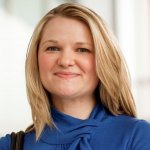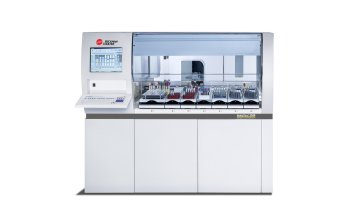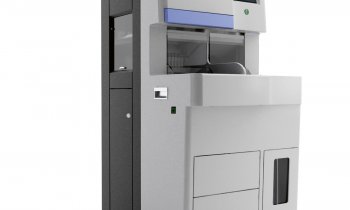
Image source: Johns Hopkins University/Courtesy of Axel Krieger and Jin Kang
News • Autonomous procedure
Robot performs first laparoscopic surgery without human help
A robot has performed laparoscopic surgery on the soft tissue of a pig without the guiding hand of a human – a significant step toward fully automated surgery on humans.
Designed by a team of Johns Hopkins University researchers, the Smart Tissue Autonomous Robot, or STAR, is described in Science Robotics. "Our findings show that we can automate one of the most intricate and delicate tasks in surgery: the reconnection of two ends of an intestine. The STAR performed the procedure in four animals and it produced significantly better results than humans performing the same procedure," said senior author Axel Krieger, an assistant professor of mechanical engineering at Johns Hopkins' Whiting School of Engineering.
What makes the STAR special is that it is the first robotic system to plan, adapt, and execute a surgical plan in soft tissue with minimal human intervention
Hamed Saeidi
The robot excelled at intestinal anastomosis, a procedure that requires a high level of repetitive motion and precision. Connecting two ends of an intestine is arguably the most challenging step in gastrointestinal surgery, requiring a surgeon to suture with high accuracy and consistency. Even the slightest hand tremor or misplaced stitch can result in a leak that could have catastrophic complications for the patient.
Working with collaborators at the Children's National Hospital in Washington, D.C. and Jin Kang, a Johns Hopkins professor of electrical and computer engineering, Krieger helped create the robot, a vision-guided system designed specifically to suture soft tissue. Their current iteration advances a 2016 model that repaired a pig's intestines accurately, but required a large incision to access the intestine and more guidance from humans. The team equipped the STAR with new features for enhanced autonomy and improved surgical precision, including specialized suturing tools and state-of-the art imaging systems that provide more accurate visualizations of the surgical field.
Soft-tissue surgery is especially hard for robots because of its unpredictability, forcing them to be able to adapt quickly to handle unexpected obstacles, Krieger said. The STAR has a novel control system that can adjust the surgical plan in real time, just as a human surgeon would. "What makes the STAR special is that it is the first robotic system to plan, adapt, and execute a surgical plan in soft tissue with minimal human intervention," said first author Hamed Saeidi, a visiting research scientist of mechanical engineering at Johns Hopkins' Whiting School of Engineering.
Recommended article

Article • New tools for the OR
Promoting ‘robot readiness’ in surgery
Using surgical robotic systems in OR settings brings many benefits, but there are also challenges that must be overcome before implementing the systems into surgical routine. We spoke with Megan Rosengarten, president of Medtronic’s Surgical Robotics business, about the technology, as well as the company’s efforts to promote the spread of robot-assisted surgery across Europe.
A structural light–based three-dimensional endoscope and machine learning–based tracking algorithm developed by Kang and his students guides STAR. "We believe an advanced three-dimensional machine vision system is essential in making intelligent surgical robots smarter and safer," Kang said.
As the medical field moves towards more laparoscopic approaches for surgeries, it will be important to have an automated robotic system designed for such procedures to assist, Krieger said. "Robotic anastomosis is one way to ensure that surgical tasks that require high precision and repeatability can be performed with more accuracy and precision in every patient independent of surgeon skill," Krieger said. "We hypothesize that this will result in a democratized surgical approach to patient care with more predictable and consistent patient outcomes."
The team from Johns Hopkins also included Justin D. Opfermann, Michael Kam, Shuwen Wei, and Simon Leonard. Michael H. Hsieh, director of Transitional Urology at Children's National Hospital, also contributed to the research.
Source: Johns Hopkins University
27.01.2022











